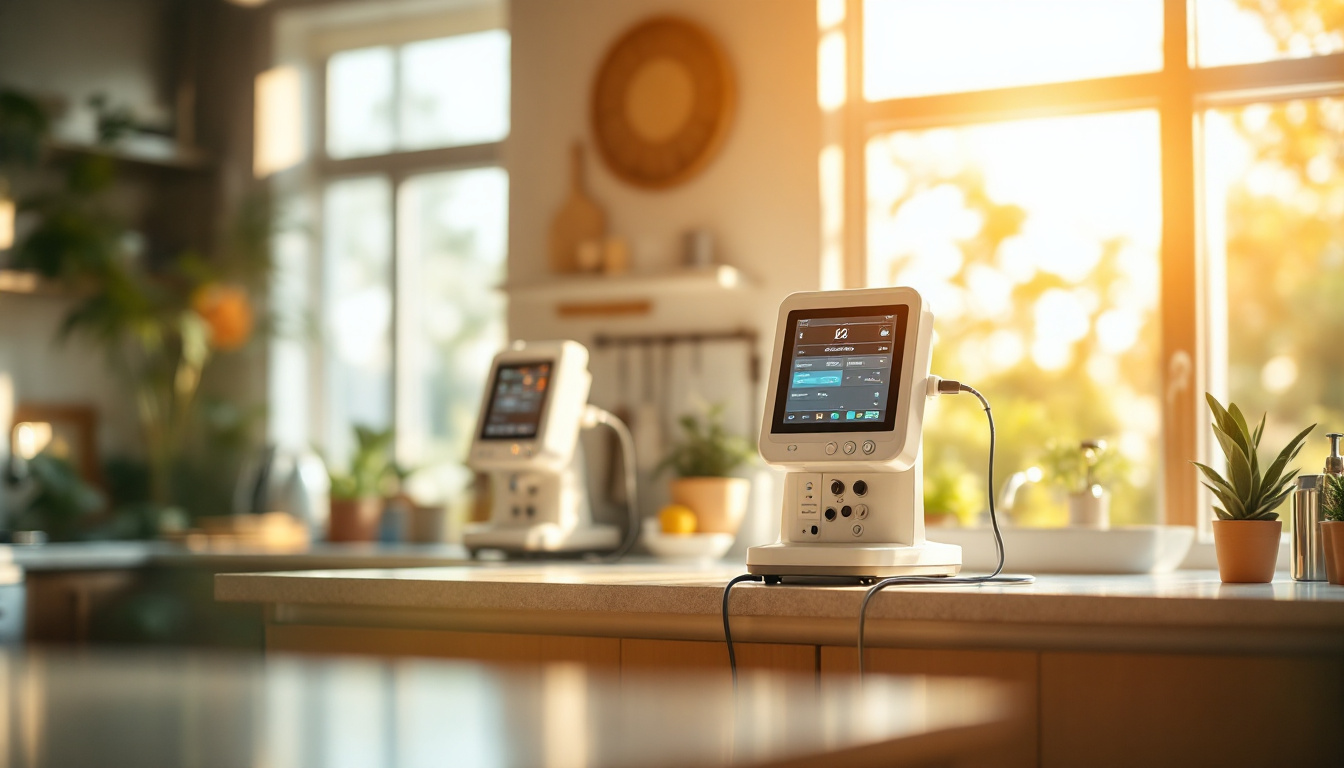How does sterile compounding improve therapy delivery?

Introduction
Sterile compounding represents a pivotal aspect of modern pharmaceutical practices, providing custom-tailored therapeutic solutions essential for patient-specific healthcare. As therapy delivery becomes increasingly sophisticated and diverse, the ability of sterile compounding to enhance medication efficacy and safety is indispensable. This article delves into the intricacies of sterile compounding and examines its multifaceted benefits in healthcare.
The Role of Sterile Compounding in Healthcare

What is the role of sterile compounding?
Sterile compounding plays a crucial role in healthcare by ensuring the safe preparation of medications, particularly injectable forms such as IV infusions. These preparations are made in cleanroom environments designed to maintain sterility and prevent contamination.
In sterile compounding, pharmacy technicians are responsible for following strict guidelines from the United States Pharmacopeia, notably USP <797>. This guidance is pivotal for maintaining safety and efficacy standards. All personnel involved must demonstrate competence, usually through formal training programs leading to specialized certifications, such as the CSPT® certification, ensuring they are well-versed in aseptic techniques.
Importance of aseptic techniques
Aseptic techniques are fundamental in the process of sterile compounding. These practices help eliminate microbial contamination, which is particularly crucial for medications that bypass the body's natural defenses. Appropriately implemented, these techniques significantly enhance patient safety and improve therapeutic outcomes.
Key aspects include:
- Adherence to environmental controls outlined by ISO standards.
- Routine monitoring of air quality, temperature, and humidity in compounding areas.
- Use of specialized equipment and personal protective gear to maintain sterility.
Training and certification requirements for pharmacy technicians
Training for pharmacy technicians in sterile compounding is vital to ensure medication safety. Requirements include:
- Certification in pharmacy technology, alongside advanced training in sterile compounding procedures.
- Ongoing education through resources like the Sterile Compounding Toolkit to stay informed on best practices and regulatory changes.
Such educational frameworks empower pharmacy technicians to manage hazardous drugs and effectively collaborate with pharmacists, enhancing compliance with stringent regulations. In this evolving field, their role is critically important to securing patient health and safety.
Significance of Sterile Compounding in Ensuring Patient Safety

What is the significance of sterile compounding in healthcare?
Sterile compounding is essential in healthcare as it plays a vital role in minimizing the risk of infections that can arise from improperly prepared medications. Medications administered through injections or infusions must be prepared in a controlled environment, free from contaminants, which is crucial for patient safety.
Moreover, sterile compounding allows for the customization of medications to meet individual patient needs. For instance, patients with allergies or unique dosage requirements can receive tailored therapies that are not available through standard pharmaceutical products. This customization enhances treatment efficacy and improves patient satisfaction.
The process is particularly critical in challenging scenarios such as oncology and surgical procedures. In these cases, patients require sterile products to ensure the highest quality of care. By adhering to strict protocols and employing aseptic techniques, sterile compounding enhances therapy delivery and safeguards patients' health.
Other Considerations
Healthcare professionals, including pharmacists, must collaborate effectively to fulfill each patient’s specific needs. The rigorous adherence to guidelines established by the United States Pharmacopeia (USP) fosters an environment of safety and reliability. Through these measures, sterile compounding significantly contributes to improved healthcare outcomes, ensuring that all patients receive safe and effective treatment tailored to their individual requirements.
Benefits of Compounding Pharmacies for Individualized Care

What is the benefit of a compounding pharmacy?
The main advantage of compounding pharmacies lies in their ability to create customized medications tailored to individual patient needs. Unlike standard medications, compounding allows pharmacists to modify the strength of a drug, change its formulation—for instance, transforming pills into liquid form or creams—and tailor flavors or eliminate allergens. This flexibility is especially valuable for patients with unique health conditions, children requiring palatable formulations, or pets needing specialized care.
Customization for patient-specific needs
Compounding pharmacies address situations where commercial products may not suffice. For instance, patients with severe allergies can receive medications free of specific allergens, enhancing safety. Moreover, the creation of flavored medications can significantly improve adherence among pediatric patients who dislike the taste of traditional formulations. Such individualized approaches ensure patients receive therapies most suitable to their specific health requirements.
Adapting medication forms
Changing the form of medication is another fundamental benefit of compounding. Geriatric patients who often deal with polypharmacy can benefit from consolidating multiple medications into one formulation, simplifying their regimen. This adaptability can lead to improved compliance and therapeutic outcomes. Personalized compounding also addresses potential issues like difficulty swallowing pills, which can be critical in enhancing adherence to treatment regimens.
Safety and quality assurance
Adherence to strict regulations and quality standards ensures that compounded medications maintain high safety and efficacy levels. Compounding pharmacies follow guidelines set forth by organizations such as the U.S. Pharmacopeial Convention (USP), ensuring their compounded sterile preparations are free from contaminants. As a result, patients can trust that the medications they receive are prepared in a controlled and sterile environment, reducing the risks associated with infection or substandard treatment.
Enhancing Medication Compliance Through Compounding

How can compounding improve medication compliance?
Compounding can significantly enhance medication compliance, especially for older adults dealing with polypharmacy. By creating customized dosage forms, pharmacists can consolidate multiple medications into one easy-to-take regimen. This simplification helps reduce the complexity of medication schedules, minimizing confusion that can lead to missed doses.
Furthermore, compounding allows pharmacists to tailor medications to remove allergens or unpleasant side effects. For instance, pediatric patients may benefit from flavored liquid formulations or mediated lollipops, making adherence less of a chore. Similarly, in geriatric patients, compounding can streamline medication regimens, promoting better adherence by consolidating medications that would otherwise require separate administration.
Additionally, tailored compounding can address specific barriers patients face, such as cognitive impairments or financial challenges. By focusing on individual needs, compounding enhances the comfort and tolerability of medications, ultimately encouraging patients to follow their prescribed therapies. This multifaceted approach leads to improved health outcomes and reinforces the importance of personalized medication solutions in fostering adherence.
Regulations and Guidelines for Ensuring Sterility and Safety
What are the regulations and guidelines governing sterile compounding?
The regulations and guidelines governing sterile compounding primarily come from the U.S. Pharmacopeia (USP). Notably, USP <797> serves as a cornerstone for establishing standards in the preparation of sterile medications, aimed at ensuring both quality and safety. Compounding pharmacies are bound by federal regulations enforced by organizations like the Drug Enforcement Administration (DEA) and the FDA.
Apart from federal regulations, state laws, which are monitored by state boards of pharmacy, provide additional oversight. The Compounding Quality Act outlines specific requirements for compounding practices, particularly for outsourcing facilities, mandating adherence to current good manufacturing practices (CGMP).
Role of accreditation and compliance
Accreditation is crucial in the realm of sterile compounding. Entities such as Pharmacy Compounding Accreditation (PCA) help ensure that compounding pharmacies meet stringent quality control standards. This process not only enhances the reliability of compounded medications but also instills trust among patients and healthcare providers.
Ensuring quality and safety in compounding
To maintain high quality and safety in compounded sterile preparations (CSPs), pharmacies must implement rigorous quality assurance measures. Compliance with aseptic processing standards and environmental controls minimizes the risk of contamination significantly. Such measures are vital for preparing medications that are safe for direct patient use, which is essential for those who require specialized therapies, especially for critical treatments like chemotherapy.
Ensuring adherence to these guidelines is key in promoting therapeutic efficacy and patient safety in sterile compounding practices.
Minimizing Therapy Volume and Waste in Healthcare
Reducing healthcare costs
Sterile compounding plays a vital role in decreasing healthcare expenditures by minimizing medication wastage. By fine-tuning dosages tailored to an individual patient’s needs, healthcare facilities ensure that only the necessary volume of medication is prepared, reducing the chances of unused medication that would typically be discarded. This practice not only conserves medication but also mitigates unnecessary spending.
Efficient use of resources
The precise adjustments made in sterile compounding lead to better resource management. Enhanced efficiencies in drug preparation help optimize inventory turnover, ensuring medications are used effectively and promptly, decreasing shelf life as a factor in waste generation.
Impact on healthcare sustainability
By adopting a waste-reducing approach through sterile compounding, healthcare systems contribute to sustainability by lowering the volume of discarded medications, thereby minimizing environmental impact. This thoughtful approach aligns with overall goals of promoting environmentally friendly healthcare practices while still meeting patient-specific needs effectively.
Advanced Technologies in Sterile Compounding

Automation and IV Workflow Management
The integration of advanced technologies, such as automated systems and IV workflow management tools, has revolutionized sterile compounding practices. These innovations streamline the preparation of compounded sterile preparations (CSPs), allowing for greater efficiency and precision in the compounding environment.
Reduction of Human Error
By reducing the reliance on manual processes, automation minimizes the opportunity for human errors that can compromise patient safety. For instance, automated compounding devices ensure that dosages are accurate and consistent, which is critical when dealing with potent medications often administered intravenously.
Impact on Therapeutic Outcomes
The adoption of these technologies not only enhances the safety and efficacy of therapies but also leads to improved therapeutic outcomes. With more accurate compounding practices, patients receive medications tailored to their specific needs, ultimately enhancing adherence to therapy. Additionally, the continuous monitoring capabilities of automated systems help to maintain the integrity of sterile environments, further ensuring the quality of CSPs.
Custom Compounding for Vulnerable Patient Populations
Individualized Formulations
Sterile compounding allows healthcare providers to create customized medications tailored to the unique needs of individual patients. This process enables adjustments in dosages and formulations, helping to enhance therapy delivery by ensuring that patients receive precisely what they require. For those with specific health conditions, personalized medications can significantly impact treatment outcomes.
Addressing Allergies and Sensitivities
For patients with allergies or sensitivities to certain ingredients commonly found in medications, sterile compounding offers a practical solution. Pharmacists can exclude problematic allergens, making treatments safer and more effective. This capability is crucial for reducing adverse reactions and enhancing overall patient wellness, particularly for those with complex health needs.
Importance for Pediatric and Geriatric Patients
Custom compounding is particularly vital for pediatric and geriatric populations. In children, it can lead to child-friendly formulations, such as flavored liquids or easier-to-swallow doses, which promote adherence. For elderly patients, compounding allows combining multiple medications into a single, manageable formulation, simplifying complex regimens. By addressing these unique challenges, sterile compounding plays an essential role in improving therapy delivery across vulnerable patient populations.
Historical Evolution of Sterile Compounding Standards
Development over the years
The practice of sterile compounding has evolved significantly over the years, driven by the need for customized medications in diverse therapeutic scenarios. Initially, compounding focused on fulfilling individual patient needs through traditional methods, but the increased complexity of medications and strict safety requirements prompted advancements in sterile techniques.
Impact of regulatory changes
Regulatory changes, particularly the introduction of USP Chapter <797>, have been pivotal in standardizing sterile compounding practices. These guidelines outline strict protocols for maintaining sterility, including environmental controls and proper techniques, to ensure patient safety and therapeutic effectiveness. The implementation of these regulations has reduced risks associated with contamination and medication errors, thereby enhancing overall patient outcomes.
Future directions
Looking ahead, the adoption of advanced technologies such as automated compounding systems will likely shape the future of sterile compounding. These innovations promise to minimize human error further and ensure precise dosing, ultimately improving the safety and efficacy of compounded medications.
The Future of Sterile Compounding in Pharmaceutical Care
Trends in Customization and Personalization
The future of sterile compounding promises to embrace a deeper level of customization. Pharmacists will continue to tailor medications to meet the unique needs of patients, addressing requirements such as allergies and specific dosages. This personalization not only improves therapy delivery but also fosters increased patient engagement and adherence to treatment plans.
Growth of Sterile Compounding Demands
As healthcare demands evolve, the need for sterile compounding is on the rise. Factors contributing to this growth include increasing incidences of drug shortages and the rising number of patients requiring specialized medications. By allowing pharmacies to produce rare injectable and infusible medications, sterile compounding plays a crucial role in ensuring patient safety and maintaining therapeutic efficacy in treatment plans.
Integration with Healthcare Systems
The integration of sterile compounding practices with broader healthcare systems is becoming more pronounced. Pharmacies that collaborate closely with healthcare providers can improve patient outcomes through better-coordinated care. Enhanced collaboration also streamlines the process of creating personalized medications, ensuring that therapeutic needs are promptly met and reducing delays in treatment delivery.
Conclusion
Sterile compounding remains a cornerstone of personalized medicine, offering invaluable benefits in terms of safety, customization, and compliance. As healthcare continues to evolve, sterile compounding will undoubtedly play a vital role in enhancing therapy delivery, addressing the unique needs of patients, and complying with stringent safety standards to ensure optimal treatment outcomes. By embracing technological advancements and adhering to rigorous guidelines, sterile compounding stands poised to meet the demands of modern healthcare and improve patient lives. Understanding the intricacies and implications of this practice is essential for crafting a future where therapy delivery is both effective and tailored to individual patient needs.
References
- How is therapy volume reduced through sterile compounding?
- What is Sterile Compounding? - Ashworth College
- [PDF] ASHP Guidelines on Compounding Sterile Preparations
- Importance of sterile compounds in infusion - Pharmko
- The Role of Pharmaceutical Compounding in Promoting Medication ...
- Compounding FAQs - American Pharmacists Association
- Understanding the Basics of Pharmaceutical Compounding
- AE: Sterile Compounding For Retail Pharmacies - Aseptic Enclosures
- [PDF] Compounding Sterile Preparations, 4th Edition Chapter 4 - ASHP
- Perform Sterile Compounding Tasks Carefully - Pharmacy Times



































































































